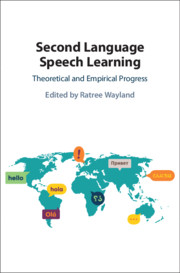Book contents
- Second Language Speech Learning
- Second Language Speech Learning
- Copyright page
- Dedication
- Contents
- Figures
- Tables
- Contributors
- Preface
- Acknowledgments
- Part I Theoretical Progress
- Part II Segmental Acquisition
- Part III Acquiring Suprasegmental Features
- Part IV Accentedness and Acoustic Features
- Part V Cognitive and Psychological Variables
- Index
- References
Part IV - Accentedness and Acoustic Features
Published online by Cambridge University Press: 21 January 2021
- Second Language Speech Learning
- Second Language Speech Learning
- Copyright page
- Dedication
- Contents
- Figures
- Tables
- Contributors
- Preface
- Acknowledgments
- Part I Theoretical Progress
- Part II Segmental Acquisition
- Part III Acquiring Suprasegmental Features
- Part IV Accentedness and Acoustic Features
- Part V Cognitive and Psychological Variables
- Index
- References
Summary

- Type
- Chapter
- Information
- Second Language Speech LearningTheoretical and Empirical Progress, pp. 335 - 396Publisher: Cambridge University PressPrint publication year: 2021

